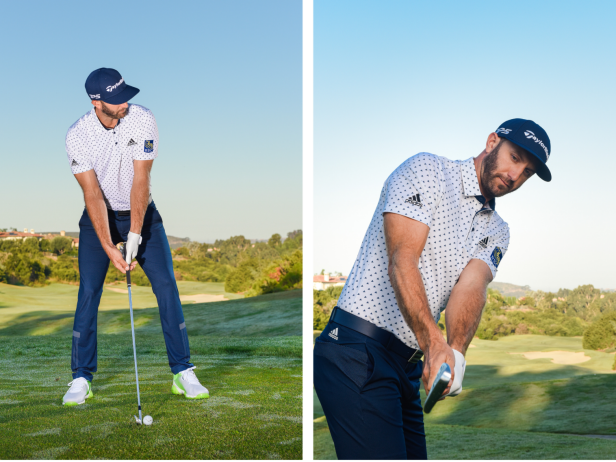My iron play in 2019 wasn’t as good as I wanted, so after the surgery on my left knee at the end of the season, I worked on getting my ball-striking back to where it was a few years ago. I think a lot of golfers can relate to dealing with the ups and downs of each part of the game.
For me, it was mostly feeling a touch out of sync, not delivering the club correctly on a consistent basis. But it’s funny how, when you refocus on a part of your game that’s not where you want it to be, things can turn in a flash. It happened to me during the FedEx Cup. I was already swinging better, but during the playoffs, everything really clicked. I won two of the three events and finished second in the other to reclaim the top spot in the World Golf Ranking. If you want to know some of the things I did to sharpen my iron play, keep reading. —WITH RON KASPRISKE
▶ Some guys on tour take thin divots and others gouge them out. But we all do one thing the same way as the club reaches the ball—we have the clubhead moving its fastest in that space just before and after contact. You’ve got to save your power for the impact zone, which means feeling smooth as you swing back and down. You want your downswing to pick up speed as the club approaches the ball. I’ll talk more about my backswing and transition on the following pages, but just know that I’m swinging at only 85 percent on most iron shots to make sure everything is synced up. Try changing your tempo so that everything feels smooth until that last moment before the club reaches the ball. That will help you rip it off the turf.
▶ We all have tendencies that sometimes creep into our swings and make it harder to do what we’re trying to do. That’s why I’m always checking my setup and backswing— the parts of the swing you can really monitor. For example, I prefer to set up a touch open (aligned left of the target) to pre-set the fades I like to hit. But every once in a while, I catch myself setting up square/neutral in relation to the target, often leading to a right miss. My other problem that’s easy to feel or spot happens in the backswing. I start to lift instead of making a good turn off the ball. What I’m on the lookout for might not be the things you need to check, but the point is to know your bad tendencies and make sure you’re doing whatever you can to keep them out of your golf swing.
▶ One of the big things that separates iron play from your woods is that you’re not trying to hit these shots as far as possible. It’s not about distance with the irons—it’s distance control. For me, it’s a lot easier to hit shots a specific distance when I’m swinging with the same smooth tempo shot after shot. I work on that a lot. I don’t want to feel like it’s rushed, or I’m pulling the club down from the top of the swing. It’s more like it’s falling. Try to feel that as you go from backswing to downswing. Also, when you practice, really pay attention to how far the ball carries with each of your irons—especially when you catch a good one. That way, you’ll always have a pretty good idea if you delivered the club correctly into the ball. And that starts with being smooth from the top down.
▶ One problem I sometimes have is one you might have, too. If I don’t get my weight moving toward the target through impact, I struggle to put the club on the back of the ball the way I want. My worst swings happen when I hang back. When I play in pro-ams, I see a lot of amateurs swinging off their back foot, trying to lift their iron shots off the ground. They usually hit it fat or thin. Instead, you want to hit down on the ball with your irons to compress it. You have to drive through with your weight on the downswing to get that pure contact. You’ll know that you’re shifting toward the target and getting through the ball if you’re taking divots after contact. You can see here (right) that the ball came off the face, but the clubhead is still cutting through the turf.
▶ That expression, through the ball, might sound funny if you’re new to the game. But it’s the feeling you want for virtually any shot in golf, especially good irons shots. What it means is that you’ve got to keep your swing speed up and keep turning your body after the ball is gone. Because I like to hit mostly fades, it’s really important for me to keep turning. If your body stops rotating toward the target shortly after impact, you’re probably going to turn a nice fade into a big slice. Think about getting your chest pointing left of the target (for righties) as you finish the swing (right). If you can swing with smooth tempo, accelerate the club down and through the impact zone, and keep turning after the strike, your iron play is going to get a lot better.

